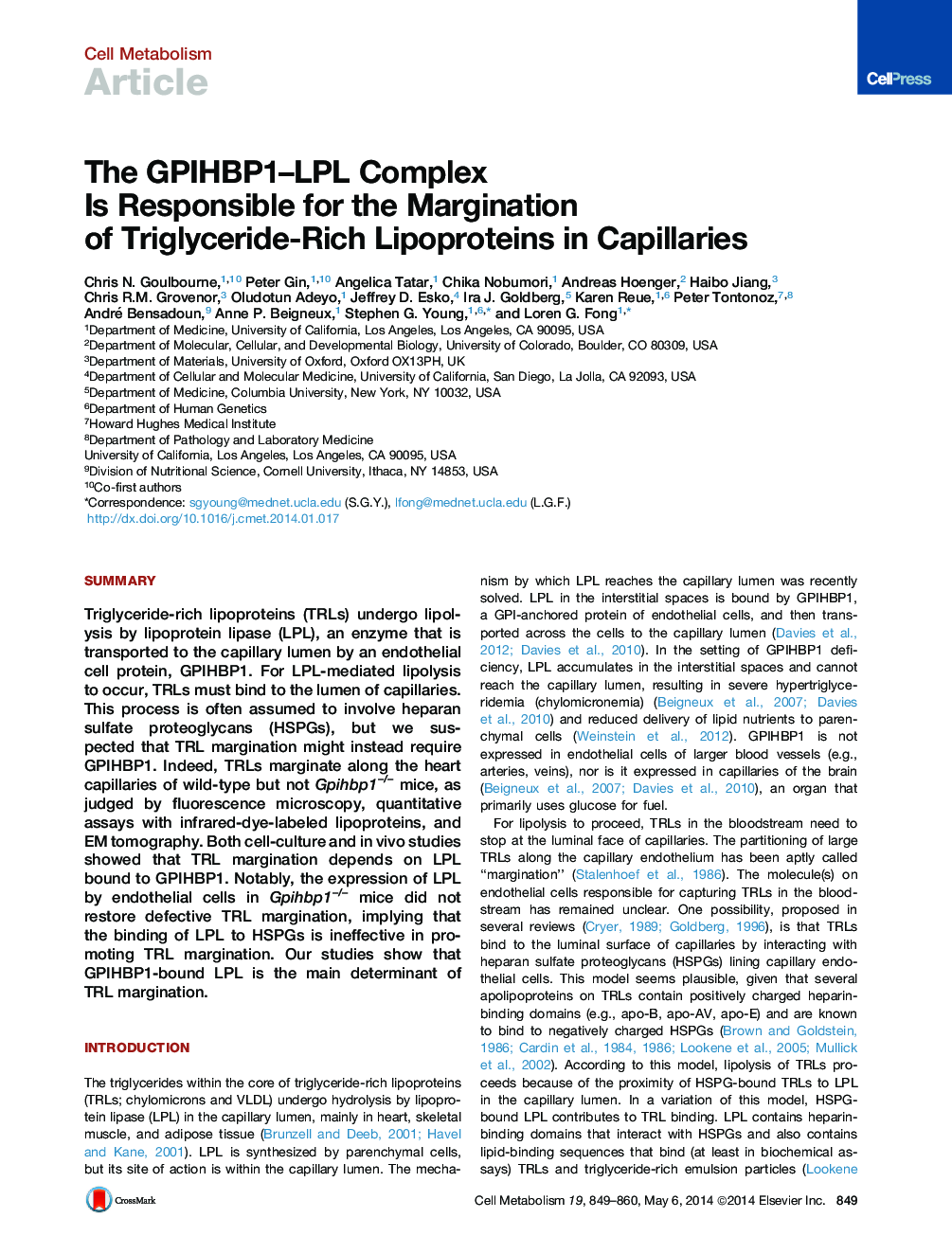| کد مقاله | کد نشریه | سال انتشار | مقاله انگلیسی | نسخه تمام متن |
|---|---|---|---|---|
| 2792647 | 1155069 | 2014 | 12 صفحه PDF | دانلود رایگان |

• TRLs bind to capillaries of wild-type but not Gpihbp1–/– mice
• TRLs attach to endothelial cell membrane structures, which we have named nanovilli
• Endothelial cell-derived LPL does not restore defective binding in Gpihbp1–/– mice
• TRLs bind to the LPL–GPIHBP1 complex in the capillary lumen
SummaryTriglyceride-rich lipoproteins (TRLs) undergo lipolysis by lipoprotein lipase (LPL), an enzyme that is transported to the capillary lumen by an endothelial cell protein, GPIHBP1. For LPL-mediated lipolysis to occur, TRLs must bind to the lumen of capillaries. This process is often assumed to involve heparan sulfate proteoglycans (HSPGs), but we suspected that TRL margination might instead require GPIHBP1. Indeed, TRLs marginate along the heart capillaries of wild-type but not Gpihbp1–/– mice, as judged by fluorescence microscopy, quantitative assays with infrared-dye-labeled lipoproteins, and EM tomography. Both cell-culture and in vivo studies showed that TRL margination depends on LPL bound to GPIHBP1. Notably, the expression of LPL by endothelial cells in Gpihbp1–/– mice did not restore defective TRL margination, implying that the binding of LPL to HSPGs is ineffective in promoting TRL margination. Our studies show that GPIHBP1-bound LPL is the main determinant of TRL margination.
Graphical AbstractFigure optionsDownload high-quality image (92 K)Download as PowerPoint slide
Journal: - Volume 19, Issue 5, 6 May 2014, Pages 849–860